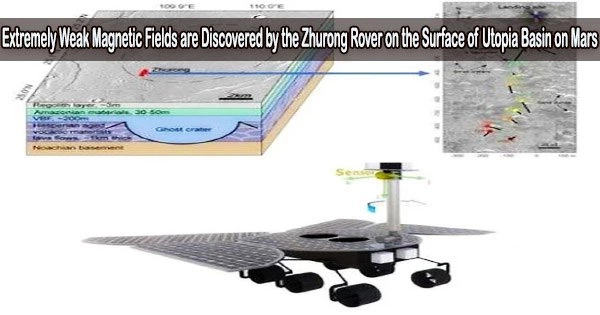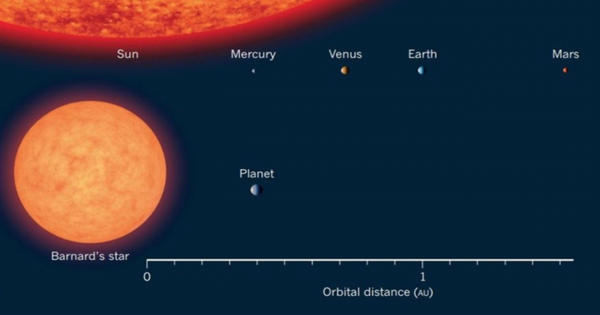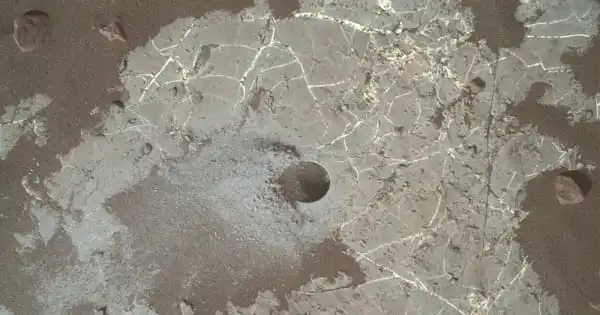Weak magnetic fields actually refer to magnetic fields with relatively low strength or intensity. In the context of electromagnetism, magnetic fields are typically measured in units of teslas (T) or gauss (G), where 1 T = 10,000 G.
A joint research team led by Prof. Du Aimin from the Institute of Geology and Geophysics of the Chinese Academy of Sciences (IGGCAS) has found extremely weak magnetic fields during the Zhurong rover’s first 1-km traverse on Mars. This indicates there are no magnetic abnormalities below Zhurong’s landing area.
The work was published in Nature Astronomy on June 19, 2023.
Weak magnetic fields can encompass a wide range of strengths, from extremely faint fields that are barely detectable to fields that are stronger but still considerably weaker than typical magnetic fields encountered in everyday life.
The first magnetic field survey of the Martian surface’s Utopia Basin was carried out using two fluxgate magnetometers on board the Zhurong rover.
“The intensity of the magnetic field was surprisingly weak in the Utopia Basin,” said Prof. Du Aimin, first and corresponding author of the study.
Results from NASA’s Mars’ lander InSight, which landed about 2,000 km southeast of Zhurong, have revealed that the crustal magnetic field at InSight’s landing site was an order stronger than that inferred from orbital measurement. However, measurements from Zhurong showed the opposite outcome, with the average intensity being an order of magnitude lower than that deduced from orbit.
One of the biggest challenges in planetary exploration is figuring out how to get extremely accurate planetary surface magnetic data. The first rover using magnetometers is Zhurong. The rover and mast rotations were used in along-track calibration to isolate the Martian magnetic field from the rover interference field. The Martian surface may now be measured in situ at many points with an accuracy of the order of nanoteslas.
The incredibly weak magnetic fields found by Zhurong suggest that the crust beneath Utopia Basin may have been demagnetized by a subsequent significant impact in the early Hesperian, or that it may have been unmagnetized since its formation some 4 billion years ago.
Further insight into the interrelated magnetic, climatic, and internal history of early Mars is provided by this new limit on the timeframe of the Martian dynamo.
















